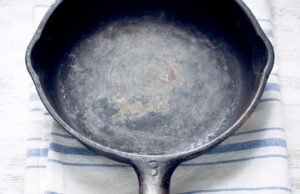As an Amazon Associate, I earn from qualifying purchases at no extra cost to you.
How to Clean Dishwasher with Borax for Sparkling Results Fast
Ever opened your dishwasher and felt a little shock at the leftover grime? That funky smell and dull interior are silently judging your cooking skills. In this article, we’ll dive into a simple, surprising way to make your dishwasher sparkle using borax. You might even wonder why you didn’t try this sooner. It’s easy, effective, and kind of fun.
First, you’ll remove racks and any loose debris. Next, sprinkle borax in the detergent compartment and around the bottom of the dishwasher. Run a hot water cycle without dishes to let it dissolve and clean deeply. Finally, wipe down seals, edges, and the door. This method saves money, avoids harsh chemicals, and keeps your dishwasher performing at its best.
Prepare Your Dishwasher for Cleaning
Before starting, take a few minutes to make sure your dishwasher is ready for a deep clean. Open the door and remove all dishes, racks, and utensils. Check the bottom for leftover food particles or any small objects. Removing racks makes it easier for borax to reach the hidden areas where grime hides. Make sure the filter is clean too, because trapped bits can stop your dishwasher from working well.
Once empty, wipe down the interior with a damp cloth. Pay attention to corners and edges where grease tends to build up. If you notice any large clumps of food, gently remove them. You don’t want anything blocking the borax from doing its magic. Also, check the spray arms for clogs. Unclogging them ensures water sprays evenly during the cleaning cycle.
Using a soft brush or an old toothbrush, scrub around the door gasket and seals. These areas can trap water and develop mold over time. A little attention here goes a long way in keeping your dishwasher fresh. Finally, leave the door open while you prepare the borax for the next step. Proper prep ensures maximum cleaning power.
- Remove racks and dishes
- Check for food debris and clogs
- Wipe down interior
- Clean filter and spray arms
- Scrub door gaskets
Apply Borax Correctly
Sprinkling borax the right way is key to a sparkling dishwasher. Start by adding about one tablespoon of borax to the detergent compartment. This allows it to dissolve gradually during the wash cycle. Then, sprinkle a little around the bottom of the dishwasher to target grime and buildup directly. Borax is gentle yet effective, breaking down grease and residue without harming the machine.
If your dishwasher is particularly dirty, you can increase borax slightly. Just avoid overloading, as too much can leave a powdery residue. The goal is even coverage so water can wash it through. Remember, borax also helps neutralize odors, making your dishwasher smell fresh.
Close the dishwasher door carefully, ensuring the borax doesn’t spill. It’s best to avoid touching it with bare hands, as borax can be irritating. You can wear gloves if you prefer. Once applied, it’s ready for the hot water cycle. This simple preparation makes the cleaning process much more effective.
- Add 1 tablespoon to detergent compartment
- Sprinkle a little at the bottom
- Avoid overloading
- Close door carefully
- Use gloves if preferred
Run the Hot Water Cycle
Turn your dishwasher on the hottest, longest cycle available. Running a full hot water cycle ensures the borax dissolves completely and reaches every corner. Hot water is key because it melts grease, loosens grime, and helps borax clean thoroughly. Make sure no dishes are inside, or you’ll reduce the cleaning power.
Monitor the dishwasher during the cycle if possible. Sometimes you can hear or see water flow issues that may need attention. If your dishwasher has a self-clean option, it can be combined with borax for a deep clean. After the cycle finishes, leave the door slightly open to let moisture escape. This prevents mildew and helps keep your dishwasher fresh.
Finally, check the interior for any leftover residue. Most of it should be gone, but a small wipe with a damp cloth can remove traces. You’ll notice a sparkling, fresh smell immediately. Hot water plus borax works like magic without harsh chemicals.
- Select hottest, longest cycle
- Ensure no dishes inside
- Monitor water flow
- Open door after cycle
- Wipe leftover residue
Clean the Dishwasher Filter
A clean filter is essential for a healthy dishwasher. Remove the filter carefully and rinse it under hot water. Use a soft brush to scrub away trapped grease, food particles, and buildup. Borax residue might have loosened some debris, making it easier to clean. A clean filter improves water flow and prevents future odors.
Check the filter’s seating area in the dishwasher. Wipe it down to remove any hidden gunk. Sometimes, food particles can settle in corners and under the filter, causing smells. Properly reinstall the filter after cleaning, ensuring it clicks or locks in place. A tiny mistake here can reduce cleaning efficiency in future washes.
For extra freshness, sprinkle a pinch of borax in the filter compartment before the next wash. This prevents odors from returning and keeps the dishwasher running smoothly. Regular filter maintenance is a small step with big impact.
- Remove and rinse filter
- Scrub with soft brush
- Wipe seating area
- Reinstall properly
- Sprinkle borax for freshness
Wipe Down Seals and Door
The seals and door edges often get overlooked but hold grease, mold, and grime. Use a damp cloth or sponge with a little borax to wipe these areas carefully. Focus on corners and crevices, where moisture tends to stay. Borax helps remove stubborn residues and neutralizes odors effectively.
For deeper cleaning, use an old toothbrush to scrub gaskets and tight spots. You can also mix borax with a little water to create a paste. Apply it gently to remove tough buildup. Avoid using harsh chemicals, which can damage rubber seals. After scrubbing, wipe down with a clean damp cloth to remove any residue.
Keep the door slightly open after cleaning to allow air circulation. This prevents mold and keeps your dishwasher smelling fresh. A few minutes of attention to seals and edges makes a noticeable difference in performance and hygiene.
- Wipe seals and door edges
- Use toothbrush for crevices
- Apply borax paste if needed
- Remove residue with damp cloth
- Leave door slightly open
Final Rinse and Check
After cleaning, run a quick rinse cycle to flush out any leftover borax. This ensures your dishwasher is completely clean and safe for dishes. The rinse also checks that water flows properly and spray arms work without obstruction.
Inspect the interior carefully. Make sure all areas are free of residue, and the filter is securely in place. You’ll notice a fresh smell, shiny surfaces, and smoother operation. Regular checks prevent buildup from returning quickly.
Finally, place racks and dishes back carefully. Your dishwasher is now ready for everyday use, looking and smelling like new. This simple routine keeps it efficient, clean, and long-lasting.
- Run quick rinse cycle
- Check interior for residue
- Ensure filter is secure
- Replace racks and dishes
- Enjoy clean, fresh dishwasher
| Task | Borax Amount | Tip | Frequency |
|---|---|---|---|
| Detergent compartment | 1 tbsp | Sprinkle evenly | Every 1-2 months |
| Bottom interior | Small pinch | Avoid clumps | Each cleaning |
| Filter | N/A | Scrub gently | Monthly |
| Door & seals | Paste or sprinkle | Use toothbrush for crevices | Each cleaning |
| Hot cycle | N/A | Longest, hottest cycle | Every cleaning |
Frequently Asked Questions (FAQs)
Is it safe to use borax in my dishwasher?
Yes, borax is safe for dishwashers when used correctly. It’s a natural cleaner that removes grease, food particles, and odors effectively. Avoid using too much, as it can leave a powdery residue. Always follow recommended amounts, sprinkle evenly, and run a full hot water cycle to dissolve completely. Borax does not damage metal, plastic, or rubber parts when applied properly.
Borax is non-toxic when handled carefully, but direct skin contact may irritate sensitive skin. Wearing gloves is recommended if you have concerns. Never mix borax with strong chemicals like bleach, as it can create harmful reactions. For dishwashing purposes, it’s a trusted, eco-friendly alternative to harsh chemical cleaners. Regular use prevents buildup and keeps your dishwasher working efficiently.
Can borax remove bad odors from my dishwasher?
Absolutely. Borax neutralizes odors rather than just masking them. Food particles and grease can create unpleasant smells over time. By sprinkling borax and running a hot cycle, it breaks down grime and absorbs lingering odors. You’ll notice a fresh, clean scent after cleaning.
For stubborn smells, target the filter, seals, and door edges with a small borax paste. Letting the dishwasher air out with the door open afterward helps maintain freshness. Using borax consistently every few months prevents odor buildup and keeps your dishwasher smelling naturally clean without relying on chemical deodorizers.
Do I need to remove the racks before using borax?
Yes, removing racks ensures borax reaches all hidden areas. Racks can block spray arms and prevent borax from contacting the bottom and sides. Taking them out allows thorough cleaning of interior surfaces, corners, and the filter.
While racks are removed, check the spray arms for clogs. Clean these to ensure water flows evenly. After cleaning, replace racks carefully. This small step improves overall cleaning efficiency, prevents residue buildup, and extends the life of your dishwasher.
Is it necessary to run the hottest cycle?
Running the hottest cycle is highly recommended. Hot water melts grease and dissolves borax effectively, allowing it to clean deeply. Cold or short cycles won’t provide the same cleaning power and may leave residue behind.
A full hot cycle ensures all areas are reached, including under the spray arms and in corners. If your dishwasher has a self-clean option, combining it with borax provides an even deeper clean. Hot water plus borax works like a natural powerhouse for dishwasher maintenance.
Can I use borax if my dishwasher has a self-clean option?
Yes, borax can complement the self-clean option. The self-clean function helps rinse away debris, while borax tackles grease and odor. Add borax to the detergent compartment and run the self-clean cycle for maximum effect.
Ensure no dishes are inside to allow borax to spread evenly. This combination cleans surfaces thoroughly, reaches hidden corners, and keeps your dishwasher fresh. Using both methods together improves performance and reduces the frequency of deep cleaning.
Do I need gloves when applying borax?
It’s recommended, especially if you have sensitive skin. Borax can irritate when in direct contact. Wearing gloves protects your hands while sprinkling or scrubbing.
Even with gloves, avoid touching your face or eyes. Wash hands thoroughly afterward if contact occurs. Gloves are a small precaution that makes cleaning safer and more comfortable, particularly during regular maintenance.
Is borax effective on mold and mildew?
Yes, borax is excellent for preventing and cleaning mild mold or mildew. It can remove buildup in gaskets, seals, and corners where moisture lingers. Regular cleaning with borax helps stop mold from forming.
For stubborn mold, create a paste with borax and water. Apply it gently with a toothbrush, let it sit a few minutes, then wipe clean. Borax is less harsh than bleach, making it safer for dishwasher interiors while still being highly effective.
Can I use borax too often in my dishwasher?
Using borax too frequently is unnecessary but not harmful. Overuse may leave a faint powdery residue. Cleaning every 1-2 months is sufficient for most households.
Too much borax can also affect the detergent’s effectiveness, so it’s best to stick to recommended amounts. Consistent but moderate use keeps your dishwasher sparkling, odor-free, and running efficiently without any negative side effects.




